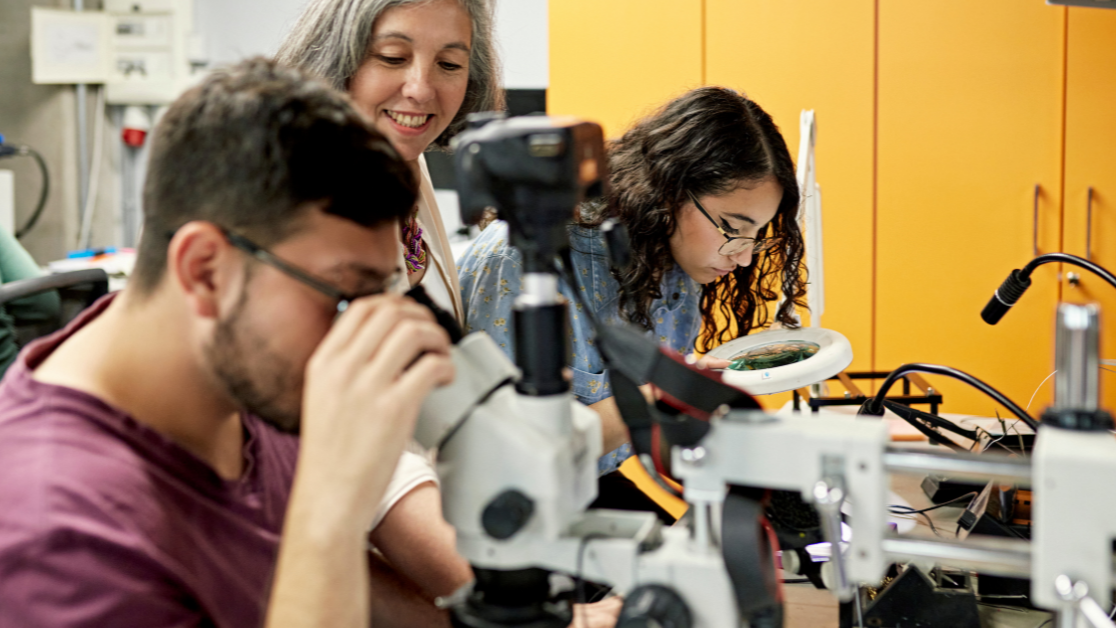At this year’s SXSW EDU conference, I spent some time on the stage with a number of impressive people: Hudson Baird of PelotonU; Dan Fisher of the ECMC Group; Dr. Aisha Francis of the Benjamin Franklin Cummings Institute of Technology; and Hari Sreenivasan of Amanpour & Company, PBS. The topic was something I spend a lot of time thinking about and discussing – namely, how can we prepare students for success while building a future-ready and diverse workforce? Doing so is a vast and complicated undertaking, and in order to get there, one thing stands out as an urgent “must.” We need to change the way people think about, create, and deliver education-to-workforce pathways so that more young people understand the wide array of options before them.
In this panel discussion, we talked about the challenges and barriers we’re up against, best practices and what we’re learning from the research on non-degree pathways, and what kinds of structural and policy changes need to happen to make this a reality. Hari framed the challenge right away, citing many decades’ worth of media and film portrayals of what post-high school success looks like. People still associate the four-year residential college experience – a statistically unlikely aspiration for so many kids – with making it. But the time has come for a new vision of success; one in which that experience isn’t the only aspiration kids have, but is one of many possibilities.
We know today’s kids are thinking about their futures. Our data shows that they’re stressed about their futures. Many of them want to go to college, but a growing number don’t. As for that group of kids—what are we doing to make sure they have the education and training to be successful? A lot of them don’t know where to begin looking for options. But there are many options – and many of those options offer high-quality, useful and industry-aligned learning experiences and credentials to students. Often, they do so in a more affordable and realistic format than four-year college can. My co-panelist Dr. Francis explained that her institution is a commuter campus that “They’re coming because they want to improve their earning capacity and improve their potential to support themselves and their families….and to do that in a way that is fulfilling…there is a growing demand for this type of education.”
So, there is a growing appetite in pockets of the country. Yet, among the biggest pieces of the puzzle is connecting kids with information about these pathways to begin with. Far too many young people know nothing but four-year college and would be hard-pressed to name a different pathway. However, for those kids who maybe do know something about non-degree pathways, yet aren’t sure they want to pursue them – it’s vital that we de-stigmatize non-degree learning experiences. The data shows that, far from being ‘less than’, these pathways can give people the opportunity for a lucrative career, without some of the financial baggage and time warp factor the traditional college experience tends to bring along with it. This reputational work is so important. If an inestimable number of kids are self-selecting out of applying to trade schools, apprenticeships, or vocational programs only because they don’t think they’re high-quality or because their parents are pressuring them into college…it’s clear that something needs to change.
For many people, the flexibility and affordability factors these new versions of higher education offer can be life-changing. It often means they don’t have to sacrifice their family responsibilities or jobs in order to earn a credential. Competency-based degree programs are the perfect example of this, as Hudson mentioned. They measure learning instead of time-in-seat and shift the narrative from what you know, to what you can show. Stackable credentials are also an increasingly attractive option for people in the workforce, who need to be able to complete their education in a piecemeal fashion. And we’re seeing more and more workplaces integrate credentialed learning opportunities into the menu of opportunities they give their workers, both as a way to attract and retain employees. The reality is that employers themselves are eager for a change, with some 72% saying they no longer think a degree is a reliable signal of a person’s ability to do a job.
From any angle, the proliferation of postsecondary pathways is about getting real and accepting that success can no longer be limited to a piece of paper that comes with a hefty price tag. It’s about accepting that today’s average high school graduate is generally not a person who has the time and resources to spend four years or more of their life exclusively dedicated to their studies. And, the consensus from me and my fellow panelists is that – while educators, policymakers, and employers have a lot of work to do in order to change the narrative and the reality for kids – the pathways that were once seen as “alternative” are not playing second-fiddle to college anymore; they are here to stay.
In our hour on stage, we talked about these ideas and a whole lot more. You can hear the full panel conversation here.





